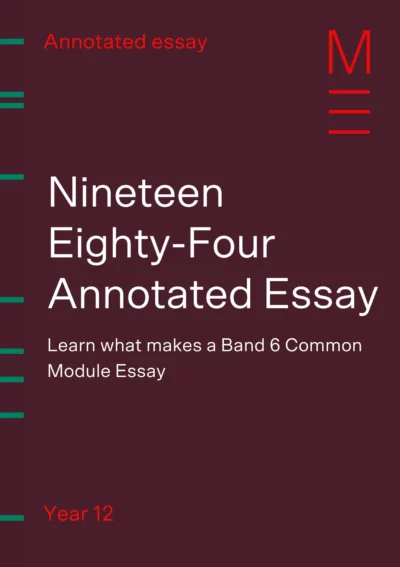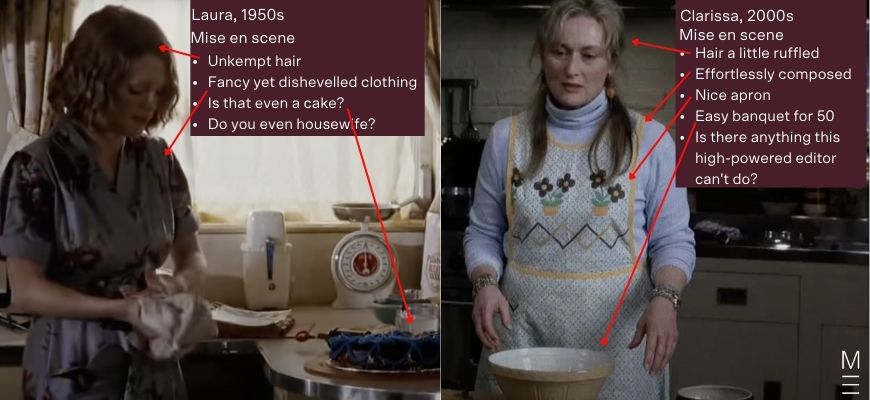Welcome to Matrix Education
To ensure we are showing you the most relevant content, please select your location below.
Select a year to see courses
Learn online or on-campus during the term or school holidays
Learn online or on-campus during the term or school holidays
Learn online or on-campus during the term or school holidays
Learn online or on-campus during the term or school holidays
Learn online or on-campus during the term or school holidays
Learn online or on-campus during the term or school holidays
Learn online or on-campus during the term or school holidays
Learn online or on-campus during the term or school holidays
Learn online or on-campus during the term or school holidays
Learn online or on-campus during the term or school holidays
Select a year to see available courses
Science guides to help you get ahead
Science guides to help you get ahead
Confused by context? Befuddled by the difference between values and attitudes? In this article, we'll clear those concepts up and show you how to ace your next contextual study.

Join 75,893 students who already have a head start.
"*" indicates required fields
Related courses

Join 8000+ students each term who already have a head start on their school academic journey.
Do you get confused by the whole “context” business that crops up in various English Modules? You’re not alone. Many students get confused by conflicting messages to “talk about context” when also being instructed to “not write a history essay.’ Others aren’t entirely sure what context is, what’s meant by values and attitudes. To help you out, we’re going to answer the question, “What is context in English and how do I write about it?”
Context, in terms of the study of High School English, is best described as the circumstances surrounding the composition of a text. When we discuss the context of a text, we need to think about the following aspects of the text’s composition:
Complicating thing it’s not enough to say that “Shakespeare was a catholic who wrote in the Elizabethan period.” We also need to think about why context is important, this means digging into relevant contextual details and thinking about values and attitudes. This may seem overwhelming, but it shouldn’t be. So, let’s unpack these, one by one.
The first question you need to address is whether the context you’re exploring is relevant or not. How do I tell if an aspect of context is important or not, you ask.
The simplest way to approach this at a High School level is to consider if it has a direct impact on the text’s content and meaning or its composition. To answer this you’ll have to know your text and you’ll have to know some contextual details to decide whether they should be investigated further or not.
A good place to start is the dates involved in a text’s composition. A good text and context combination to consider as an example are the poems of TS Eliot that are set for study in the HSC and the contextual event of the First World War. This is a common one students get tripped up with.
The poems set for study are :
Many students discuss the tensions in Preludes, Rhapsody, and The love song of J Alfred Prufrock as caused by the horrors of World War 1: July 1914 – November 1918. This can be a bit confusing. The poems were mostly written in 1910 when Eliot was studying in France. They were published a few years later by his friend after he’d settled in England.
However, the poems clearly predate the 1st World War and while the political and nationalistic tensions that led to the conflict, placing too much weight on that would be very tenuous. This is a bit of anachronism: thinking of things “out of time.” Instead, we can see that these poems all occur in the wake of the second industrial revolution where urbanisation and economic upheaval have had profound impacts on the lives of people living in European cities.
You can read more about TS Eliot, here.
It’s important to strike a balance between making a concise contextual point and writing a history essay! This can be challenging, especially the more you know about history. A significant paradox – you can’t write about context without understanding details about it: writing concisely and briefly about context becomes more challenging the more you know!
Let’s look at George Orwell’s Nineteen Eighty-Four as an example. 1984 was written in 1944 – 1948. Clearly, we can see the following events could have had an impact on the composition of his final novel:
As you can see, there are myriad things that you can connect to context for the novel that are important and relevant. Your job, as a critic is to concisely include references to the events that are particularly pertinent to answer the question you’ve been set. Let’s use the Spanish Civil War as an example.
The Spanish Civil War is important contextually because:
There’s a lot to digest there. So, to give an example of dos and don’ts, let us consider a quotation from the text where context is essential to explain things.
The Thought Police would get him just the same. He had committed–would still have committed, even if he had never set pen to paper–the essential crime that contained all others in itself. – Chapter 1
In this extract, the protagonist, Winston, describes the dangers of the secret police that enforce the law in the dystopian world of the novel. He uses a paradox to describe this – that he would still be guilty even if he hadn’t committed the crime.
Don’t get lost in context:
| Having written in his diary, Winston realises that “The Thought Police would get him just the same. He had committed–would still have committed, even if he had never set pen to paper–the essential crime that contained all others in itself.” Here, Orwell is using Free indirect discourse to dip into Winston’s thoughts and convey the paradox of the thought police and thought crimes. This type of unrealised crime evokes the tactics used by the NKVD during the Red Terror in the Soviet Union when Stalin used purges and threats as a means of subduing an unsettled population. Orwell had first-hand experience of this when Stalinist agents began purging factions from the coalition fighting in the Spanish Civil War, his friends from the PTSOU – an anarchist faction he served with – were captured and executed for being democratic socialists and therefore traitors to the communist cause. Secretly Stalin had made a pact with Hitler and these agents were supporting. Thus, the thought police in Nineteen Eighty-Four are a means of depicting the invisible crimes and threats the tyrants from Orwell’s context used to control the populace. The fear felt by Winston in the extract reflects Orwell’s fear as he hid from NKVD agents in a bombed-out church. |
While some of this is quite pertinent information, it is too detailed and doesn’t really serve to further an argument. Instead,
Do connect context to analysis concisely:
| Orwell uses the omniscient threat of the thought police to depict the terror of ideological conformity. Once he’s written in his diary, Winston realises that “The Thought Police would get him just the same. He had committed–would still have committed, even if he had never set pen to paper–the essential crime that contained all others in itself.” The paradox here is that even if he hadn’t written, he was dead all the same, reflecting the ideological terror Stalin exercised in the Soviet Union and that Orwell experienced when the NKVD purged the anti-government forces they were supposedly allied with during the Spanish Civil War. |
As you can see, just one or two concise pieces of contextual information support the argument being made.
At Matrix, our HSC English experts will help you achieve the marks that you want!
Learn how to write Band 6 HSC responses in English
Expert HSC teachers, detailed feedback, and comprehensive resources. Learn with Matrix+ online English courses.
Another aspect of writing about context that frustrates students is discussing values and attitudes.
First, some definitions:
All texts deal with values and attitudes. Quite often, composers of texts convey the prevailing values of a society in the background context of a text. They then present their perspective on these things, their attitude, by how they have characters interact or act under these values.
To return to the example of Orwell’s Nineteen Eighty-Four:
We could convert this in our previous response by amending it to:
| Orwell uses the omniscient threat of the thought police to depict the terror of ideological conformity that he feared was becoming a prevalent political value. Once he’s written in his diary, Winston realises that “The Thought Police would get him just the same. He had committed–would still have committed, even if he had never set pen to paper–the essential crime that contained all others in itself.” The paradox here is that even if he hadn’t written, he was dead all the same, reflecting the ideological terror Stalin exercised in the Soviet Union. Orwell’s attitude towards this value was in part shaped by his own experience when the NKVD purged the anti-government forces they were supposedly allied with during the Spanish Civil War. |
If you want to learn more about Nineteen Eighty-Four, read this article.
Learn why HSC markers would score this essay highly! Fill out your details below to get this resource emailed to you. "*" indicates required fields
Download your 1984 Common Module essay

Download your 1984 Common Module essay
Many students struggle with writing things in a manner that connects the example and analysis to relevant contextual information.
Let’s look at a couple of different ways you can structure all of this in a response. To illustrate, let’s look at a pair of contrasting examples from Stephen Daldry’s 2002 film, The Hours (set for English Adv Mod A).
What is The Hours, what’s it about?
Daldry’s film is an adaptation of Virginia Woolf’s 1925 novel Mrs Dalloway (to be specific, it’s an adaptation of a novel by Michael Cunningham which is an adaptation of Woolf’s text). Woolf’s novel depicted a day in the life of housewife Clarissa Dalloway as she set about hosting a party. In brief, throughout the novel, she seeks to be recognised for hosting a party as male characters are recognised for their pursuits. In The Hours, the characters of Laura and Clarissa are simulacra of Clarissa Dalloway. Unlike Clarissa, Laura – a housewife in 1950s America, is not adept at fulfilling the oppressive stereotypical roles of being a housewife – she feels smothered by her responsibilities as a wife and a mother. Clarissa is a successful editor at a prestigious publishing house, in the film, she is organising a party to celebrate her friend and former lover Richard’s career. Where Laura struggles with fulfilling expectations, Clarissa does them effortlessly – successful career, doting mother, loving wife, caring friend, wizard in the kitchen, effortless hostess.
Daldry conveys this in the film by using contrasting mise en scene across the different time periods:

In these contrasting stills, we can see is en scene being used to convey contextual information as well as contrasting different characteristics about the two women relevant to the film’s themes.
In the left hand still, Laura struggles to bake a cake for her husband’s birthday. While dressed in a fancy frock, she is a little unkempt her hair isn’t done, her dress is a little wrinkled, her cake is a disaster. The costuming and set dressing clearly mark the setting as the 1950s, yet Laura’s appearance and creation show she doesn’t fit the stereotypical wife (especially in contrast to her impeccably dressed best friend, Kitty). This is a commentary on the oppressive nature of gender roles during that period of time.
In the right hand still, Clarissa is choosing to host a party for her friend and lover. While she has a successful career, she still can’t escape the expectations of society that she be all things for all people. Unlike the mise-en-scene on the left, Clarissa is effortlessly dressed and wearing a stereotypical apron. She is seemingly effortlessly throwing a complex banquet for several dozen people. When she breaks down in tears later in the scene, it’s not so much the pressure of cooking that triggers it but Lois’ visit and behaviour that dredges up the past.
The Hours comments on the role of women in society in different time periods and the pressures placed upon them:
There are a couple of ways we can present contextual information around an example from the text. We want to discuss:
| Idea | Example | Technique | Context |
| Social expectations of women |
| Mise-en-scene of:
|
|
When writing a response, there are a couple of different ways you can present information:
Now let’s look at a couple of examples:
Context → Example → Explanation
| While there was a change in the expectations society placed upon the role of women between the 1950s and 2000s, Clarrissa cannot escape the expectations that plagued Laura. Daldry reflects this using contrasting mise-en-scene between Laura’s period and Clarrissa’s in the matching scenes where they prepare a dinner party. In one scene, Laura is dressed in a period-appropriate house frock, she is a little unkempt and her cake is a disaster, symbolising her struggle to conform to oppressive social expectations. In contrast, Clarissa is effortlessly presented and where Laura’s messy kitchen depicts struggle, Clarissa’s denotes competence. However, while Clarissa demonstrates ease and comfort in fulfilling an anachronistic domestic role in her scene – reflecting shifting values of the period, she still has to dress the part in a rather stereotypical apron to fit the part of patriarchal expectations while preparing a banquet for a man in addition to her role as a senior editor for a publisher. In this, Daldry clearly critiques how societal progression seems to have stalled for women. |
Example → Context → Explanation
| Daldry reflects contrasting expectations of women using mise-en-scene between Laura’s period and Clarrissa’s in the matching scenes where they prepare a dinner party. Reflecting 1950s values, Laura is dressed in a period-appropriate house frock, she is a little unkempt and her cake is a disaster, symbolising her struggle to conform to oppressive social expectations whereas, in contrast, Clarissa is presented as effortlessly presented in a clean and organised kitchen conveying domestic competence. These contrasting scenes illustrate that while social expectations and values shifted between the 1950s and 2000s in some ways, in others they stayed the same. Laura’s domestic struggles illustrate how she felt stifled and oppressed, unable to pursue the life and love she yearned for. While as much as things have changed, Clarissa still has to dress the part in a rather stereotypical apron to fit the part of patriarchal expectations while preparing a banquet for a man in addition to her role as a senior editor for a publisher. In this, Daldry clearly critiques how societal progression seems to have stalled for women. |
If you want to learn more about The Hours and Mrs Dalloway, read this article.
There are a few key things that top students do to make sure they nail their contextual study essays. If you want to emulate them, you need to:
What you should do now is reflect on your own study habits and make a list of what you need to start doing, now, so you can improve your marks.
Written by Matrix English Team
The Matrix English Team are tutors and teachers with a passion for English and writing, and a dedication to seeing Matrix Students achieving their academic goals.© Matrix Education and www.matrix.edu.au, 2025. Unauthorised use and/or duplication of this material without express and written permission from this site’s author and/or owner is strictly prohibited. Excerpts and links may be used, provided that full and clear credit is given to Matrix Education and www.matrix.edu.au with appropriate and specific direction to the original content.